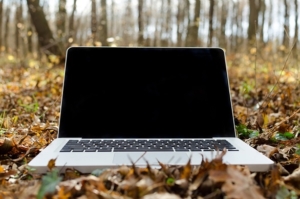Forest Management Technology
Forest Management Technology
Up to now, forest management has had to take a very hands-on, personal inspection kind of approach, so that specific trees could be marked for cutting and removal, and the forest in general could be culled of unhealthy specimens. However, the onslaught of forest fires over the past decade has virtually overrun this old-school method of management, and hastened the advent of a more high-tech solution.
Forward-thinking managers at The Nature Conservancy are now in the process of testing out a solution which holds great promise for faster, cheaper, and more accurate management of forest lands. This comes in the nick of time, with forest fire disasters mounting up, and millions of acres of prime land being consumed recently by raging conflagrations.
The new technology
The problem faced by solution seekers was a daunting one – how to retain much of the same individual inspection capability, but on a much larger scale, so that dying and dead trees could quickly be removed. Those trees provide much of the fuel for forest fires which get out of control, and take down enormous stands of healthy trees with them.
Enter the Digital Restoration Guide (DRG). This software program offers the same kind of direct approach as painting dead trees, while capitalizing on the speed of computers to cover much larger territories in much less time. A forester equipped with a mobile computer loaded with DRG software can patrol large areas on an ATV, entering relevant information about specific GPS coordinates of areas, and the health of trees contained within those sectors. Later, tree harvesters can use the map created by the DRG software and the information recorded by the forester, to know which trees need to be culled.
In the first full-blown pilot test of the software, a target area of 327 acres was used to see how the new technology compared to more traditional methods of forest management. Supporters were gratified to find that the process was roughly five times faster than the time needed by the walk-and-paint method, and it cost less than half as much to execute.
Those aren’t the only benefits – the recorded information can be used in other ways as well, to estimate tree numbers, sizes, and the interspace between trees. In the past, separate trips would have to be made to gather such information when it was needed, and that resulted in additional cost and expenditure of time.
Future usage
With the unquestioned success of the new tree-mapping software, it has been approved for surveying tracts of land in the thousands of acres. It also seems likely that usage will be expanded into even more productive and more all-encompassing arenas. Already, tech gurus are considering how to get the software airborne to conduct very large survey missions, and extend the reach and the effectiveness of modern forest management.












